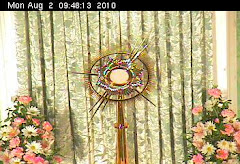 'Memento homo quia pulvis es et in pulverem reverteris' This is one of two alternative instructions which may be used during the imposition of ashes. The other being, 'Turn away from sin and be faithful to the Gospel.'
'Memento homo quia pulvis es et in pulverem reverteris' This is one of two alternative instructions which may be used during the imposition of ashes. The other being, 'Turn away from sin and be faithful to the Gospel.' The season of Lent begins on Ash Wednesday and runs until the Mass of the Lord's Supper on Holy Thursday.
With these words, 'Memento homo . . . . ' and with the ashes made from last year's palms, Catholics throughout the world begin the season of Lent. It is a time of repentance and penitence as we prepare for the Easter Triduum when we commemorate the Paschal Mysteries of the Crucifixion, Death and Resurrection of Our Lord Jesus Christ.
The ashes we receive symbolise death and remind us of our own mortality and judgement, requesting us to look again at our lives and cleanse ourselves of our sins so that we may be prepared to face the final judgement.
The wearing of ashes is also a sign of humility before God and our neighbour. Ashes on our forehead is a visible reminder, both to ourselves and others, of our sinful nature and our need for God's forgiveness.
The wearing of ashes, this outward sign, is meaningless unless it is accompanied by true and sincere sorrow for our sins.
The prophet Joel says:
'Yet even now, says the Lord,
with fasting, weeping and with mourning;
rend your hearts and not your clothes.
Return to the Lord, your God,
for he is gracious and merciful,
slow to anger, rich in mercy.'(Joel 2: 12-13)
Have a holy and prayerful Lent.









2 comments:
Can you translate 'Memento homo quia pulvis es et in pulverem reverteris' please - forgotten too much Latin to work this one out!
Here we go Flick ,'Remember man that you are dust and to dust you will return'.
Post a Comment